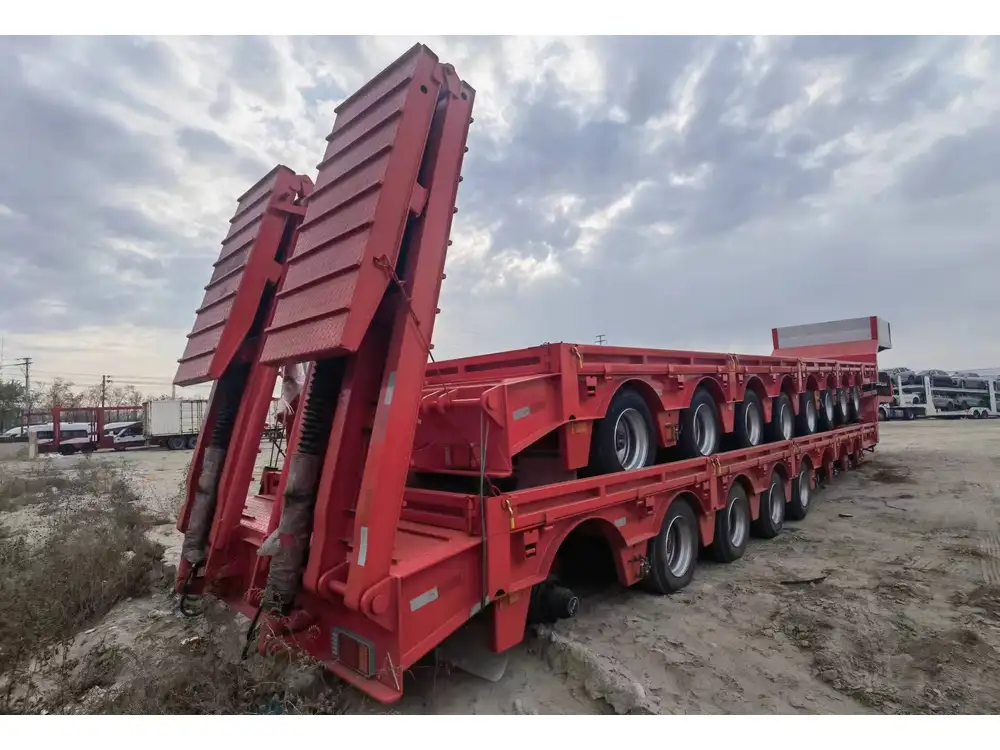In the vast landscape of logistics and transportation, understanding the fuel capacity of semi trucks emerges as a critical component for fleet managers, truck drivers, and industry stakeholders alike. As one contemplates fuel efficiency, route optimization, and cost management, the question, “how many gallons do semi trucks hold?” transcends from mere curiosity to an essential concern. This article meticulously examines the fuel tank capacities of semi trucks, delineating factors influencing these capacities, the types of trucks available, and practical implications for trucking operations.
Fuel Tank Capacity: A Comprehensive Overview
Standard Capacities
The fuel tank of a semi truck plays a pivotal role in its efficiency, range, and operational costs. On average, most semi trucks hold between 100 to 300 gallons of diesel fuel. However, this figure can vary significantly based on several factors. Below is a table summarizing the capacities of popular semi truck models.
| Truck Model | Fuel Tank Capacity (Gallons) |
|---|---|
| Freightliner Cascadia | 120 – 150 |
| Peterbilt 579 | 100 – 150 |
| Kenworth T680 | 100 – 150 |
| Volvo VNL Series | 120 – 200 |
| International LT Series | 100 – 200 |

Variability Factors
Truck Configuration: The design and purpose of the truck heavily influence its fuel capacity. Long-haul trucks typically offer larger tanks compared to local delivery trucks, designed for shorter distances.
Fuel Type: While diesel is the predominant fuel type used in semi trucks, alternative fuels such as biodiesel or compressed natural gas (CNG) may affect tank structure and volume.
Regulatory Guidelines: Different regions may impose regulations impacting tank designs, including maximum fuel capacities.
Tank Types
Single vs. Dual Tanks: Semi trucks can be equipped with either single or dual tanks. Dual-tank systems allow trucks to extend their range significantly by holding more diesel fuel, which is crucial for long deliveries across rural areas.
Advantages of Dual Tank Configurations
Extended Range: A truck with dual tanks can operate longer distances between refueling stops, which is advantageous for long-haul trucking.
Balanced Weight Distribution: Dual tanks can help evenly distribute weight, enhancing vehicle stability, especially in rugged terrains.
Flexibility in Operations: If one tank runs out or is compromised, a secondary tank can ensure continued operation, an essential factor during critical deliveries.

Understanding Fuel Efficiency
Gallons per Mile
A vital metric in the trucking industry is gallons per mile (GPM) or miles per gallon (MPG). Most semi trucks generally achieve an average of 6 to 8 miles per gallon. Understanding this efficiency is essential for calculating how long a truck can run before needing to refuel.
| Average MPG | Average Gallons (100-gallon tank) | Range (miles) |
|---|---|---|
| 6 MPG | 100 gallons | 600 |
| 7 MPG | 100 gallons | 700 |
| 8 MPG | 100 gallons | 800 |
Factors Influencing Fuel Efficiency
Load Weight: Heavier loads necessitate more energy to transport, which can decrease MPG.
Driving Conditions: Urban driving with frequent stops and traffic congestion often leads to lower MPG compared to highway driving.
Truck Maintenance: Regular maintenance, including tire checks and engine tune-ups, plays a significant role in optimizing fuel efficiency.

Cost Implications
Calculating Fuel Costs
Given the fuel prices fluctuate, it is critical for operators to understand how fuel tank capacity directly influences operational costs. A truck with a larger capacity might seem more cost-effective, but if its fuel efficiency is considerably lower, it might negate any savings.
For instance, consider a semi truck with a 150-gallon tank operating at an average of 7 MPG:
- Fuel Price: $3.00 per gallon
- Total Cost for a Full Tank: 150 gallons × $3.00/gallon = $450
- Distance Covered: 150 gallons × 7 MPG = 1,050 miles
- Cost per Mile: $450 ÷ 1,050 miles = $0.43/mile
Planning for Refueling
Understanding fuel capacity enables trucking companies to strategically plan refueling stops, ensuring that trucks do not run low on fuel during long hauls. Efficient refueling strategies can help minimize idle times and contribute to overall productivity.

Environmental Considerations
Emission Standards
As the transportation sector is under scrutiny for its environmental impact, many semi truck manufacturers are striving to meet stringent emission standards. Trucks designed with larger fuel tanks often utilize advanced combustion technologies that minimize harmful emissions while still maintaining efficiency.
Fuel Alternatives
Emerging environmentally friendly fuels such as biodiesel, CNG, and electric trucks are becoming more prevalent. Although these alternatives may have different fuel tank capacities and ranges, they represent a shift toward enhancing sustainability in the trucking industry.

Pros and Cons of Alternative Fuels
| Fuel Type | Advantages | Disadvantages |
|---|---|---|
| Biodiesel | Renewable, lower emissions | Limited availability, higher costs |
| CNG | Cleaner burning, reduced emissions | Infrastructure limitations |
| Electric | Zero emissions, lower operational costs | Limited range, charging infrastructure |
Tips for Fleet Managers
Optimizing Fuel Use
Monitor Driver Performance: Training drivers on optimal driving practices can enhance fuel efficiency—gentle acceleration and deceleration, steady speeds, and minimizing idling can yield significant savings.
Scheduled Maintenance: Regularly scheduled maintenance checks to ensure the truck is operating at peak efficiency to minimize unexpected breakdowns and keep fuel usage predictable.
Load Management: Utilizing technology to gauge optimal loads can help avoid overloading, which can drastically affect fuel consumption and decrease mileage.

Leveraging Technology
In today’s digital era, many fleet management platforms provide real-time insights on fuel usage, emissions, and driver performance. Investing in such technology can lead to substantial savings and improved operational efficiency.
Future Trends in Fuel Capacity and Technology
With the trucking industry rapidly evolving, potential changes in fuel tank capacities could be on the horizon. Innovations in fuel technology, autonomous driving, and electric vehicles signal a transformative phase for semi trucks.
Fuel Efficiency Developments
Aerodynamics Improvements: Designing trucks with better airflow can lead to higher MPG, impacting fuel tank capacity estimates.
Hybrid Technologies: The integration of hybrid systems may alter traditional fuel tank requirements, leading to new specifications in tank sizes.
Smart Tanks: Future tanks may be equipped with sensors to monitor fuel levels and consumption in real time, providing invaluable data for fleet managers.
As we assess the question of how many gallons semi trucks hold, it becomes clear that the implications resonate far beyond mere numbers. Fuel capacity affects cost efficiency, environmental impact, and operational strategies. Understanding the nuances surrounding this topic equips stakeholders with the necessary tools to make informed decisions that optimize performance while minimizing costs. In an industry where every drop counts, knowledge becomes the oil that keeps the wheels turning smoothly.



